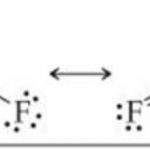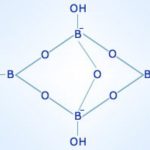Oxidation State The elements of group 13 have to two electrons in the s- orbital and one electron in the p-orbital of the valence shell. These elements are expected to show a uniform oxidation state of +3. Boron and aluminium which show an oxidation state of +3 only but gallium, indium and thallium due to inert pair effect show oxidation state of both +1 and +3 . As we … [Read more...] about Chemical Properties of Boron Family
Chemistry
Anomalous Behaviour Of Carbon
Carbon, the first member of group 14 ,shows an anomalous behaviour i.e. differ from rest of the members of its family. The main reason for this difference are : 1) exceptionally small atomic size b) higher electronegativity c)higher ionisation enthalpy d) absence of d orbital in the valence shell The main point of differences are: 1) Carbon in form of … [Read more...] about Anomalous Behaviour Of Carbon
Uses of Boron and Aluminium
Uses of Boron 1) Boron fibres have enormous tensile strength and hence are used to make bullet proof vests and light composite material for aircraft. 2) Natural boron is 20% boron-10 and 80% boron-11.Boron-10 has a high cross section for absorption of low energy neutrons. 3) Borax and boric acid are used in the manufacture of heat resistant glass, glass wool and fiber … [Read more...] about Uses of Boron and Aluminium
Boron Hydrides
The binary compounds of boron with hydrogen are called Boron hydrides. These hydrides of boron are called boranes.These hydrides can be divided into several series: 1) BnHn+4 (called nido borane) such as B2H6 (diborane), B5H9 (pentaborane) , B6H10 (hexaborane) , B8H12 (octaborane) , B10H14 (decaborane). 2) BnHn+6 (called arachno borane) such as B4H10 (tetraborane) … [Read more...] about Boron Hydrides
Borax
Borax contains the tetranuclear unit i.e. [B4O5(OH)4]2– . The correct formula is Na2[B4O5(OH)4].8H2O. Preparation of Borax 1) From Tincal Naturally occurring borax is called tincal or suhaga. Tincal obtained from dried up lakes contains 50% borax. It is boiled with water and filtered to remove insoluble impurities of clay ,sand. The filtrate is concentrated when … [Read more...] about Borax



